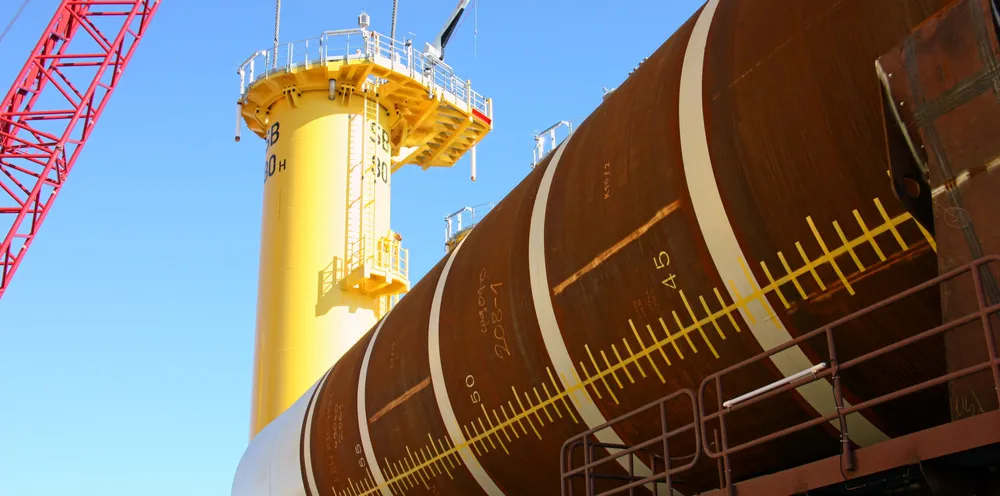Bladt in 'historic' factory build-out for world's biggest-ever offshore wind monopiles
Lead-off stage expansion of Lindø facility in Danish port of Odense will underpin fabrication of 50 XXL steel foundations a year

The world’s largest offshore wind turbine monopiles – measuring a colossal 100 metres in length – will soon start rolling out of steel manufacturer Bladt’s yard in the Danish port of Odense, after the button was pushed on a ‘historically large’ expansion of the fabrication facility.
Green is the new black. Subscribe to Accelerate
Get the market insight you need into the global oil & gas industry's energy transition – from the new newsletter from Upstream and Recharge. Sign up here
The company’s new super-XXL concept, which has been designed for the 200-plus-metre-rotored turbines coming onto the market, could open up the use of monopiles in waters of “over 50 metres”, potentially changing the market dynamics for jackets and other foundations for so-called ‘mid-depth’ project sites.
“Soon, most wind farms will be dominated by 15MW turbines with rotor diameters of 240 metres. These turbines require an enormous foundation fixed to the seabed, and now, we are moving one step closer to meeting the future demand, while, at the same time, consolidating our position as one of the leading suppliers of offshore wind foundations and substations,” said Bladt CEO Anders Søe-Jensen.
“We see [the Lindø facility expansion] as starting with a ‘single road’ and expanding into a ‘multi-lane highway’ [of monopile construction fabrication lines],” said Søe-Jensen.
“Assuming the market delivers what the industry thinks it will,” he added, noting the port of Lindø has in total some 1 million square metres of land that could be built out onto for a still-larger deep-draught monopile fabrication facility.
The monopiles to be manufacture at Bladt’s enlarged facility – which will not be as long as a football field but also an ultra-wide 15 metres and weigh 3,000 tonnes – will make it possible to installed offshore wind farms in waters much deeper than the usual limit of around 35-40 metres, previously the preserve of pricey steel jackets and alternative technologies such as concrete gravity bases.
“Each monopile is a gigantic steel construction, and we will be among the first suppliers which is able to produce steel constructions of this size,” Søe-Jensen said. “This design will press the boundaries.
“In the ‘old days’, the conventional wisdom was that monopiles really couldn’t go much beyond 30 metres or so and you’d go with jackets, but now we are seeing things somewhat differently – though of course seabed conditions and the size of turbine have to be factored in.”
Bladt’s mushrooming northern seas home market is the engine of the manufacturer’s expansionism but its ambition takes in the soon-to-boom US Atlantic play too.
“You look at the numbers [of project capacity build-out] off Europe and we expected to be kept busy,” said Søe-Jensen, whose company has had a hand in supplying one-third of the world’s offshore wind turbine foundations to-date. “The US will shape up in the coming years, too.”
He adds: “From our production site in Denmark, we can ship the structures internationally, and we will thus enter into partnerships with our customers in a continuously growing market and thereby consolidate our global market position within substations, fixed foundations and the floating offshore wind foundations of the future.”
Bladt has signed lead-off agreements with machine suppliers, and planning of the new productions facilities at Lindø has begun.